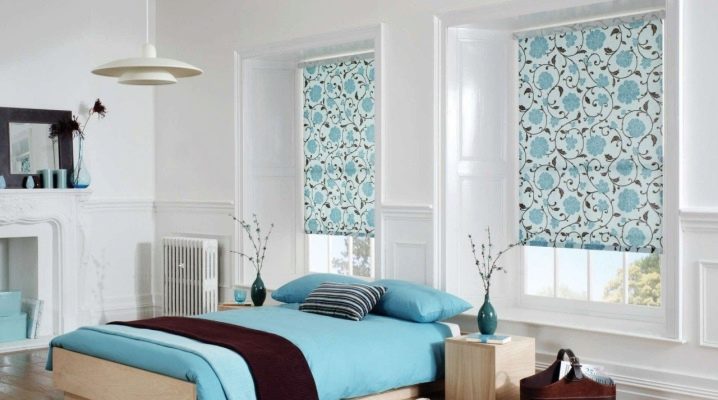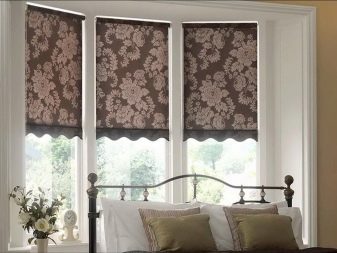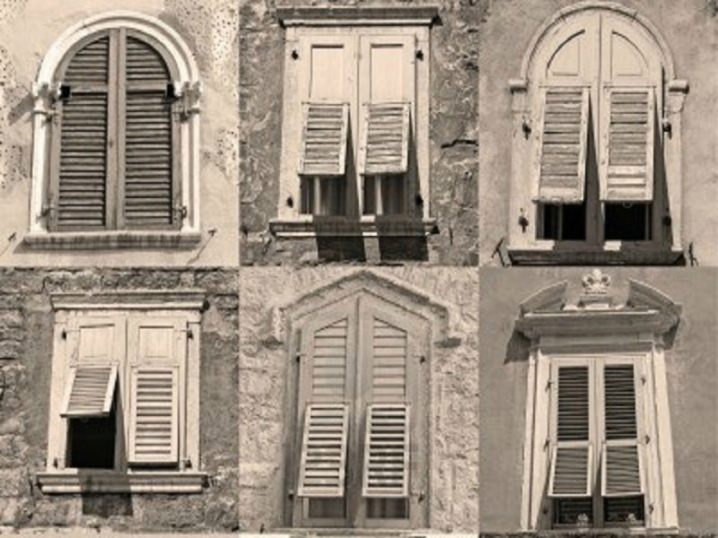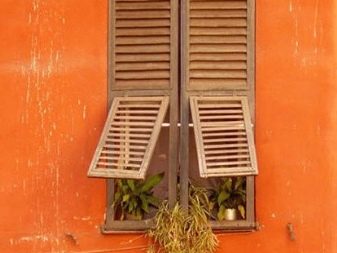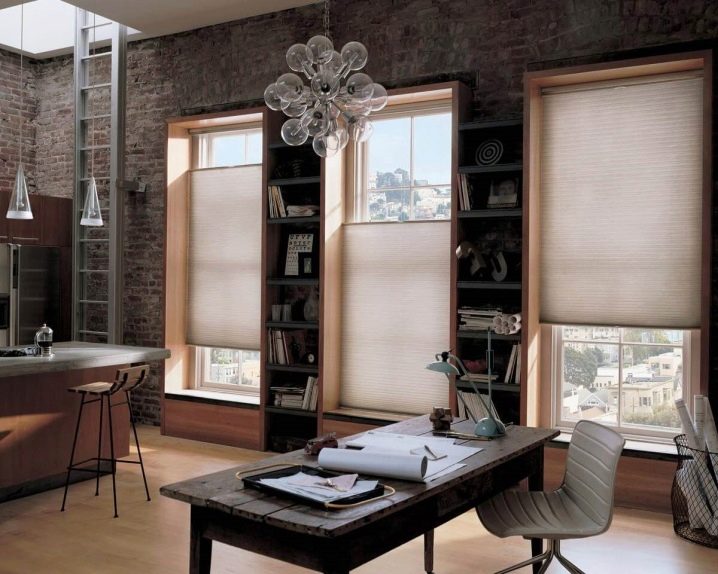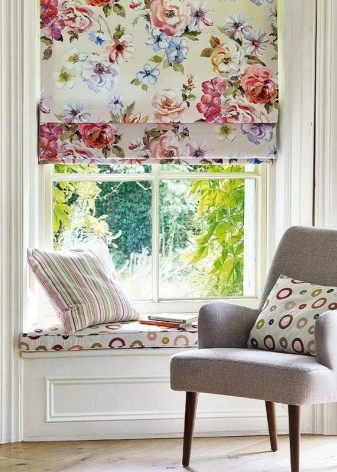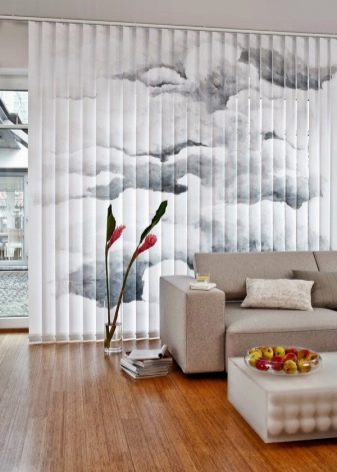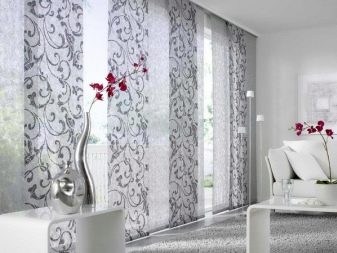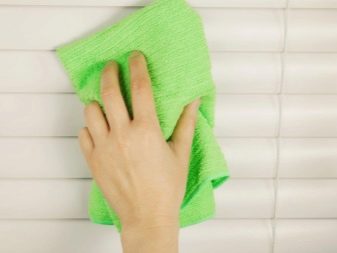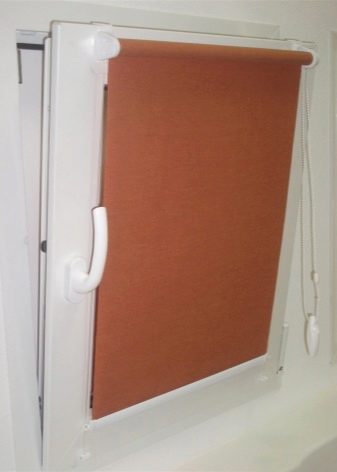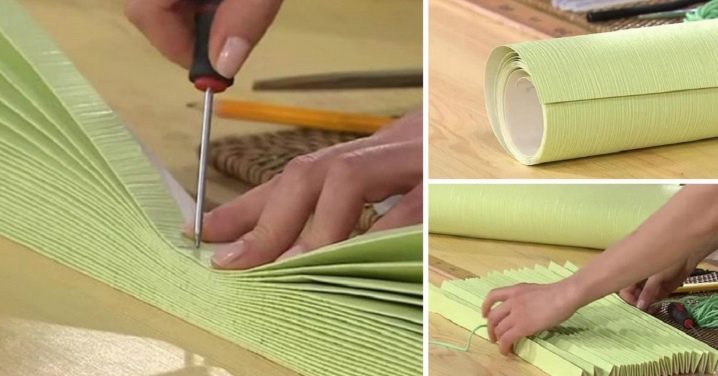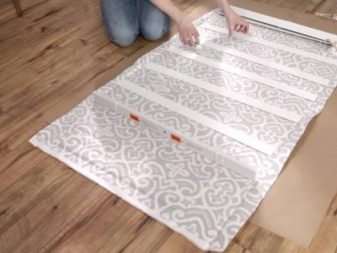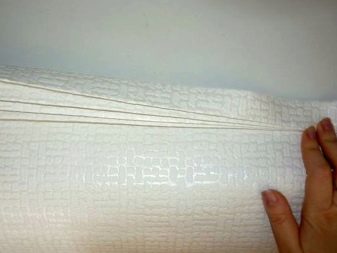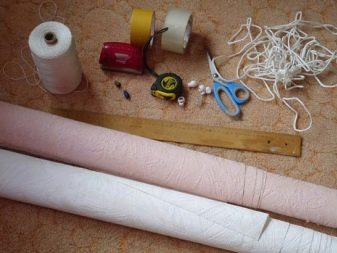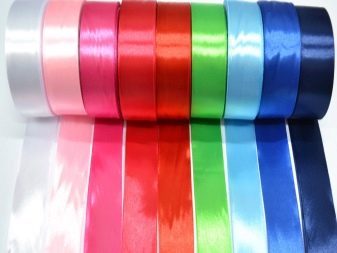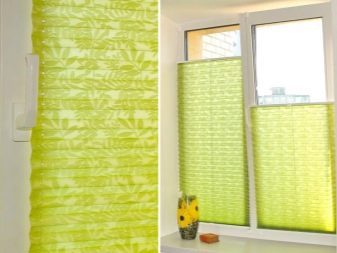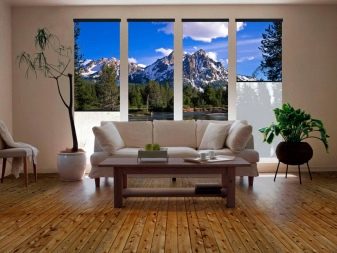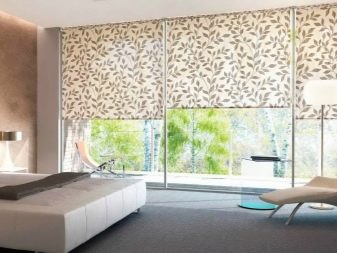Blinds from wallpaper
Today, many choose for the interior of the blinds from the wallpaper. This option is very unusual, interesting - precisely because of this, it gained popularity among consumers.
History of
Blinds appear in history in the second half of the 18th century - in Philadelphia. They began to produce the English designer John Webster. But only almost a hundred years later, the American industrialist John Hampton received a patent for them, and so they enter the everyday life of people already “officially”: first from wood and fabric, later (in the second half of the 20th century) - from metal.
The name comes from the French word "jalousie" and translates as "jealousy." Most likely, the origins of the appearance of such products go to the distant past: to the traditional East and medieval Europe.
In the first case, a special culture and strict rules of conduct tell jealous husbands to hide the beauty of their wives.So, the first versions of such “curtains” appear on the windows: wooden products let a sufficient amount of light into the room, but hide everything that is inside from strangers.
In Europe, similar products were appreciated by the representatives of the oldest profession, because they helped them to keep intrigue in front of customers: through the gaps, outlines were visible, a feeling of something forbidden, distant - and at the same time close and accessible, was fueled.
Now the blinds are firmly embedded in everyday life, they are used by people in a variety of areas: from apartments to various offices.
Blinds in the interior
Blinds are the solution that is suitable at any time of the year and for any types and styles of rooms. In summer, they will give freshness to the space, improve mood, letting the warm sunlight through the diffused rays. In winter, they will give a cozy atmosphere. Such products can be used in virtually any room - thanks to the large number of options.
If the office is decorated in laconic minimalism or high-tech style, you can use classic products that do not stand out from the general background.So choose an option from the wallpaper. So you can completely transform the room, as if breathing new life into it.
You choose: whether to use a monophonic material, merging with the general style, or to make a bold move, to emphasize the color or pattern attention on the windows. Designers have long been using these "games" with color solutions to give freshness to the interior.
If you are the owner of a cozy apartment in vintage or Japanese style, then the ideal option is not found. Remember ancient Japan with its thin paper screens or small scattering of flowers on the walls. Lightweight blinds from the wallpaper will be a very good solution.
The use of paper blinds does not end with shading windows. They can also be used for doorways, dividing the premises in the absence of doors. From such products a small screen may well turn out, successfully zoning the space or hiding parts of the room from each other. Do not be afraid to experiment, you can always change the material, remove it.
Can I do it myself?
Blinds are one of the most comfortable to use curtains.If you compare them with the classic light curtains of fabric, it can be noted that the blinds are much easier to clean from dust and other contaminants (you can forget about the long washing and drying).
Thanks to such products, it is possible to provide both complete darkness and bright light, twilight in the room: you just need to raise or lower the blinds. Diffused light when choosing a paper version is very relaxing.
Today there is a large selection of materials: various types of wood, metal, fabric, paper (even a newspaper will do), wallpaper. Each option has its advantages and disadvantages.
Perhaps the greatest variety of different exactly blinds from the wallpaper. Here a lot of textures and drawings allows you to choose the option that is suitable for your interior. Ease of handling and care will not make you regret after a while about your time, effort and money.
A very important advantage is that you absolutely do not depend on the size or type of products. Attaching such "curtains" (as on plastic, and on wooden window frames in a room or on a balcony) is easier than ever.
The main advantage is the price: There is no need to go to the salon and spend money, because any person can easily make such “curtains” with their own hands. The result will be no worse, while the creation of such products will not make much effort. You will be completely free to choose colors, style and much more.
As a result, you get a unique material that protects from street light. This is a universal solution for any interior style. When designing the perfect room, many are looking for precisely practicality, ease of creation. It is worth considering life hacking.
To make such a useful home decoration is quite simple: you just have to take the time and take into account all the recommendations listed below. So the product will be as accurate as possible, the results of the work will please you.
When choosing a material should be borne in mind that the wallpaper must be paper. Vinyl or acrylic wallpaper can not be bent and collected in the "accordion". A string or rope is worth taking a strong, capable of holding the entire structure.
To get homemade blinds from wallpaper, prepare the following:
- strong thread or rope (you can choose it to match the color of the wallpaper, but you can focus on it);
- scissors and / or construction knife;
- hole punch or awl;
- glue or adhesive tape (double-sided, so that you can fix the entire structure);
- fixation device;
- pencil and ruler;
- wallpaper.
Step by step instructions for the classic version:
- Measuring the window. It is necessary to find out exactly the height, then you should add another quarter to it (it will go to create an "accordion"). Rope cut the same length as the material. Leave a few centimeters on each side so that the blinds do not cling, easily rising and falling. Calculate also the distance from the window at which then hang the blinds: with the assembled condition of the products, there should be a little space before the glass and frame.
- Work with wallpaper. According to the measurements obtained earlier, cut the required amount of wallpaper. Collecting them in the "accordion", you should first make a pencil (using a ruler) equal indents for the folds. In classic blinds, the indentation of each step is 3-5 cm. As a result, the same rectangles should turn out. Be careful, otherwise the blinds will turn out curves.
- Threading. Make an awl or hole punch on the sides of the wallpaper.The holes must be fixed with adhesive tape on the back side and re-hole them. With wide windows, you can make a third hole in the middle (a ruler is used for measuring). Thread.
Idea: in some interiors hemp cord looks beautiful instead of thread. It is suitable, for example, for interiors that use natural materials (wood inserts and the like) or a small floral print. In more classic versions of the interior, you can try to use a satin ribbon.
- Fasteners. Using double-sided tape to attach the blinds across the width. Spread them to the length you need, make the knots so that the blinds are evenly assembled. Make sure that the nodes (especially below the bottom and top steps) do not slip into the holes.
- The final touch. To fix the blinds at the bottom, you can use both special tools and simple clothespins.
Idea: you can use braid or hemp cord (if you allow the interior and wallpaper design).
More interesting looking option (suitable for narrow windows):
- Measuring the window. It happens exactly the same as in the first version.Remember that in the final version below you will get a semicircle half the width of the source code.
- Work with wallpaper. The canvas is drawn and bent into an "accordion" - 3-5 cm indent. After that, you should find the middle, make a hole in it (with an awl or hole punch). Secure the hole from the back with an adhesive tape - and then pierce it again.
- Fasteners. Attach double-sided tape to the upper step along the entire length, hang “curtains”. Spread them to the required length - taking into account that the decoration will occupy another half of the width of the cut canvas. Spread, make knots on the rope / thread so that they do not slip into the holes.
- The final touch. A double-sided tape is attached to the lower step of one half. Then the edges are gently pulled together, until a semicircle is formed.
How to make blinds with your own hands, you can see in the next video.
Unusual solutions
The following interesting options can be distinguished:
- As already stated above, wallpaper blinds are more than just a curtain for a window. With their help, you can bring a vividness to the interior by simply focusing on them.It can be a bright color, an interesting pattern or texture.
- For very creative people, the option of coloring material can be suitable. In this case, you will receive a unique pattern. You can use spray paint to create soft color transitions.
- Try experimenting: change the indentation at each fold, making it smaller or larger. Try to imagine or sketch to see how it will look as a whole.
- Avoid inharmonious combinations of colors or their abundance (more than three different, not counting the universal black and white). Otherwise, the room will look congested, and the eyes and brain will quickly tire. Try not to use too bright colors: over time they get bored and begin to cause irritation. Prefer pastel shades.
- Remember that patterned blinds are better for plain walls, and smooth and plain colors for other surfaces.
